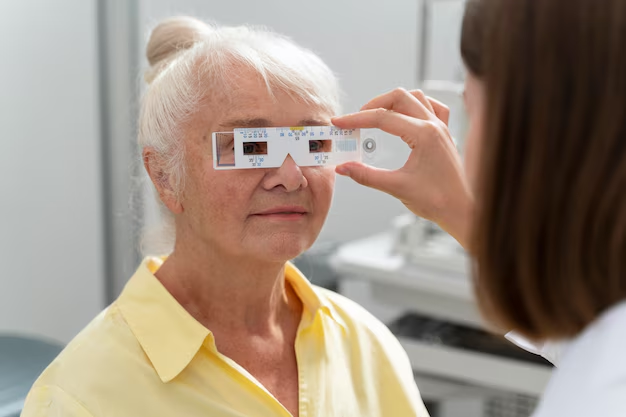Navigating Post-Cataract Surgery Light Streaks: What to Expect and How to Adapt
Cataract surgery is one of the most common and successful procedures performed worldwide. After the opaque cloudiness of cataracts fades away, many patients find themselves in awe of the newfound clarity and brightness in their vision. However, some might encounter a slight hitch post-surgery—streaks or halos around lights. This can be disconcerting, especially when you expect your vision to be flawless after the procedure. So, will these streaks of light after cataract surgery go away? Let's delve into this topic and explore the nuances for a better understanding.
Understanding Light Streaks Post-Surgery
Streaks or halos around lights, known as dysphotopsia, are not uncommon after cataract surgery. These visual phenomena occur due to the eye adapting to the newly implanted intraocular lens (IOL). Dysphotopsia can manifest as:
- Positive Dysphotopsia: The appearance of light streaks, arcs, or halos.
- Negative Dysphotopsia: Perceived as dark shadows or lines in the peripheral vision.
Why Do These Phenomena Occur?
Adjustment Period: As your eye adjusts to the new IOL, the brain is still getting accustomed to the altered light patterns. This adjustment can create unusual perceptions like light streaks.
Type of IOL Used: Multifocal IOLs, designed to replace multiple focal distances, may more commonly result in visual anomalies. Patients with these lenses might report halos around lights, particularly noticeable at night or in low-light conditions.
Healing Process: Inflammation or slight swelling post-surgery can temporarily affect how light enters your eye, leading to visual aberrations.
Lens Edge Reflection: The edges of the IOL can sometimes cause reflections, contributing to the light streaks you see.
Can Light Streaks Disappear Over Time?
The good news for most patients is that these visual disturbances often improve significantly over time. Here's how:
- Natural Adaptation: The brain adapts to new light pathways created by the IOL, gradually reducing the appearance of streaks.
- Healing: As your eye continues to heal post-surgery, inflammation subsides and vision typically stabilizes.
- Neuroadaptation: The brain's ability to adapt to new visual information helps diminish dysphotopsia effects.
Timeframe for Improvement: Many patients notice these light streaks diminishing within a few weeks to months after surgery. Although the complete disappearance of the visual phenomenon isn't guaranteed, for most, it becomes less pronounced and bothersome over time.
Mitigating Light Streaks: Practical Tips
If you're dealing with lingering light streaks and seeking relief, here are some steps that may help manage and adapt to these changes:
Adjust Your Environment
- Lighting Conditions: Ensure adequate lighting in your living and working spaces. Bright lights can help reduce the prominence of streaks and improve overall visibility.
- Nighttime Solutions: When driving at night, try anti-glare eyeglasses or night-driving glasses that are designed to reduce glare from headlights and streetlights.
Routine Check-Up
- Follow-Up Visits: Regular post-surgery checkups are crucial. Discuss any persistent visual disturbances with your ophthalmologist to ensure they're part of the normal healing process and not a sign of other issues.
Defensive Driving
- Safe Practices: Avoid driving at night, especially in the first few weeks after surgery, if light streaks are prominent. Practice defensive driving to manage unexpected visual distractions safely.
Vision Aids
- Consider Tinted Lenses: Sunglasses with anti-reflective coating or light-tinted lenses may help minimize glare and halos during daylight.
Related Visual Adjustments Post-Cataract Surgery
Understanding the anatomy of what happens during cataract surgery can highlight what is considered normal versus cause for concern.
Common Visual Changes
- Improved Light Sensitivity: Many report heightened sensitivity to light post-procedure due to the sudden increase in clarity and brightness.
- Color Perception: A noticeable shift in color perception is common as more natural light enters the eye, showing colors more vividly than seen pre-surgery with cataracts.
Factors Affecting Recovery
- Individual Healing: Everyone heals differently. Factors like age, overall health, and pre-existing eye conditions can influence recovery.
- Surgical Technique: The precision and method used by the surgeon can also impact recovery experiences.
What if Light Streaks Persist?
If light streaks continue to interfere significantly with daily activities after your initial healing period, it's essential to consult with your eye specialist. In rare cases, further intervention might be necessary. Possible solutions include:
- Lens Exchange: Switching the type of IOL might help mitigate symptoms, especially if related to the specific lens used.
- YAG Laser Capsulotomy: This laser procedure treats posterior capsule opacification, a potential postoperative complication that might exacerbate glare and streaks.
Empowering Your Post-Surgery Journey
The road to recovery after cataract surgery is generally smooth, with most patients experiencing a marked improvement in vision quality. However, sporadic challenges like light streaks can arise. Understanding the nature of these experiences and knowing you have options can empower you to make informed and confident choices.
Stay proactive in your recovery and engage with your eye care professional to discuss any concerns. Adjustments and slight modifications can make a world of difference in your visual comfort and quality of life. Trust the process, be patient, and give your eyes the time they need to heal and adapt.
Summary: Key Considerations 🚦😎
- Time Heals: Streaks often reduce within a few weeks to months.
- Environment: Adjust lighting and use driving aids at night.
- Follow-Up: Regular check-ups are crucial; discuss any concerns.
- Lifestyle: Avoid night driving and use sunglasses or anti-glare lenses.
- Ongoing Issues: Persistent issues may require professional intervention.
Through understanding and managing your expectations post-cataract surgery, you can enjoy a smoother transition to the clearer, brighter vision that awaits on the other side.

Related Articles
- Are Cataracts Curable
- Are Cataracts Genetic
- Are Cataracts Hereditary
- Are Cataracts Nuclear Sclerosis
- Are Cataracts Painful
- Are Ivizia Eye Drops Okay After Cataract Surgery
- Are You Awake During Cataract Surgery
- Are You Awake For Cataract Surgery
- Are You Put To Sleep For Cataract Surgery
- Are You Sedated For Cataract Surgery